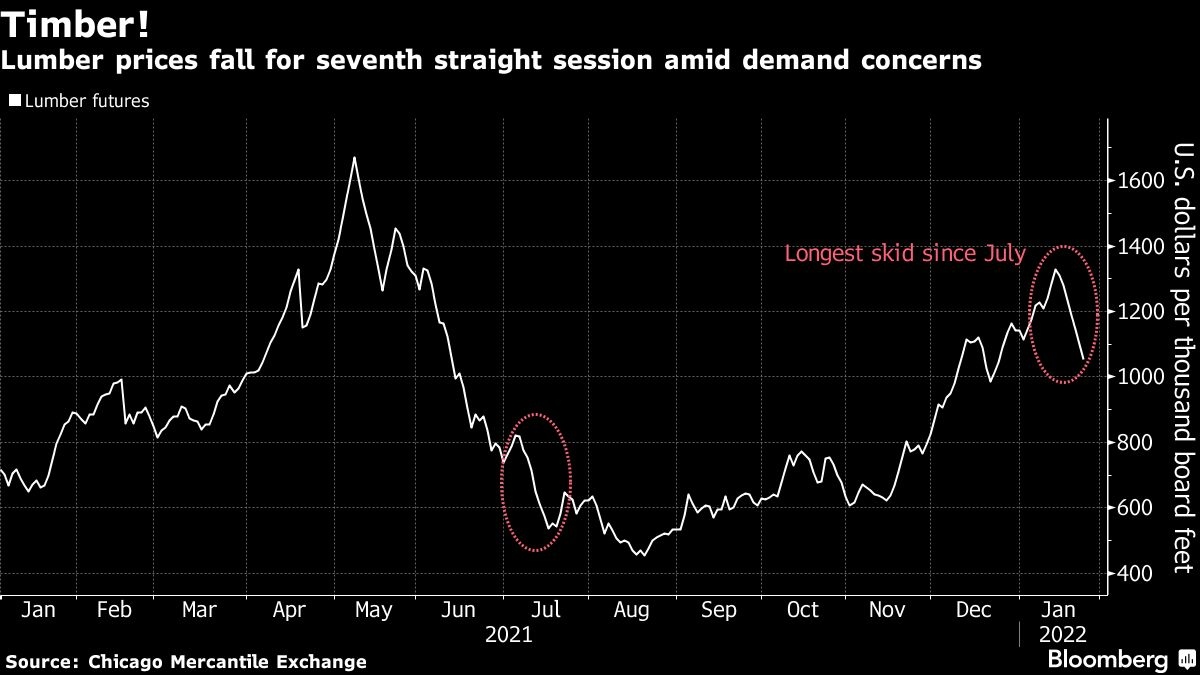Jan 25, 2022
Lumber sinks for seventh day as lofty prices cancel home builds
, Bloomberg News
The price of lumber could come down this summer: Analyst
Supply chain chaos and lofty prices have sparked a reversal for lumber.
Lumber futures tumbled by the exchange limit to US$1,053.70 per 1,000 board feet on the Chicago Mercantile Exchange on Tuesday, heading for their seventh-straight decline. That’s the longest slump since July. The pullback in the futures market may signal that soaring costs and transport bottlenecks will crimp demand.

“They’re probably sensing consumers are going to be smarter this year and stop buying,” said Russ Taylor, president of Russ Taylor Global in Vancouver. “The sticker shock is going to hit consumers earlier this year.”
Wood prices have been volatile since the pandemic began. They touched record highs amid a COVID-19 inspired building boom, then collapsed because sawmills ramped up production and high prices stifled demand.
Flooding in British Columbia disrupted supplies and shipments in late 2021 and now vaccine mandates that apply to truckers crossing the Canada-U.S. border are adding to transport woes, Taylor said. Markets in the eastern U.S. and northern California rely on trucks to deliver lumber from Canada, and a shortage of drivers may affect shipments there, he said.
An index of framing composite has more than tripled since late August, adding US$20,000 to the price of an average new home, according to the National Association of Home Builders. Labor shortages and transportation woes have made it harder to get building supplies, prompting builders to delay or cancel projects, said David Logan, director of tax and trade policy analysis for the industry group.
“The starter home market has seemingly vanished,” Logan said by phone. “We’ve seen affordable housing projects canceled.”



